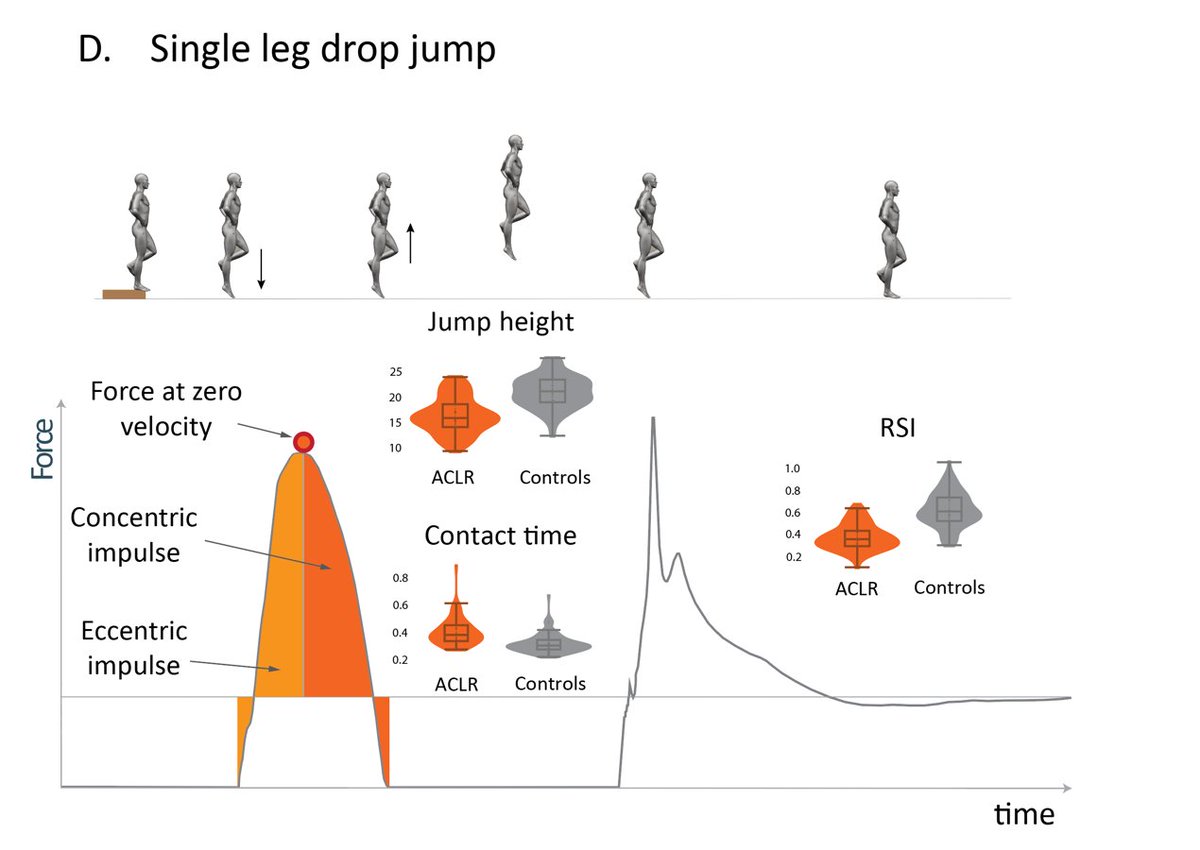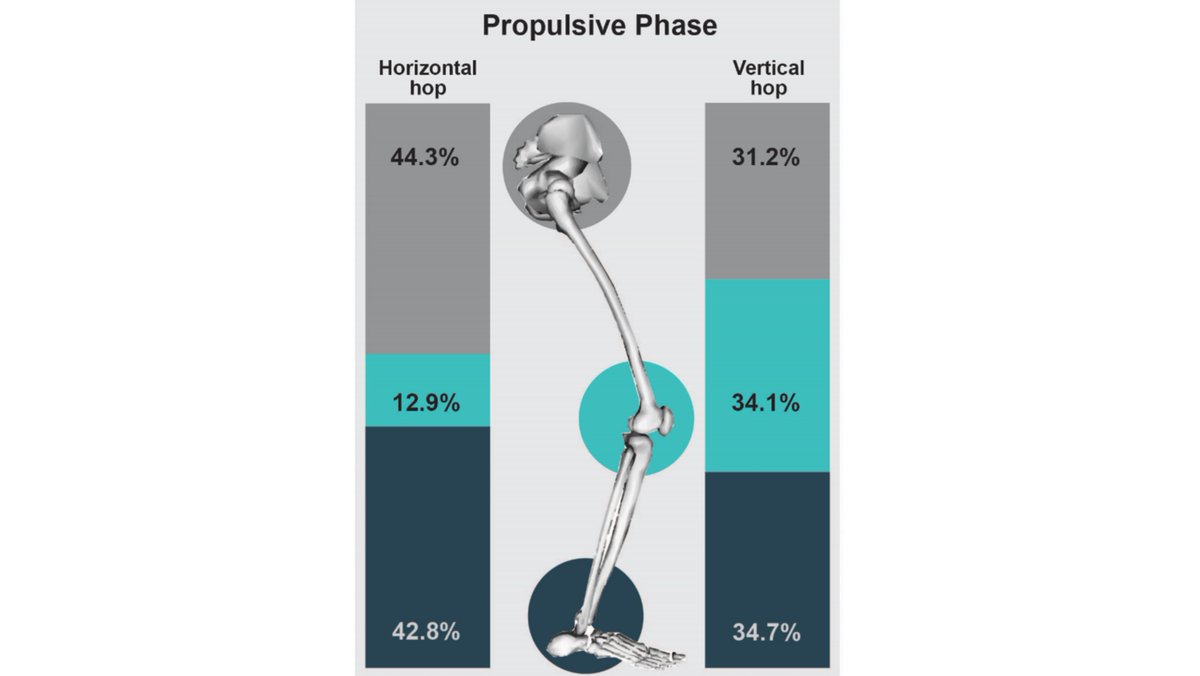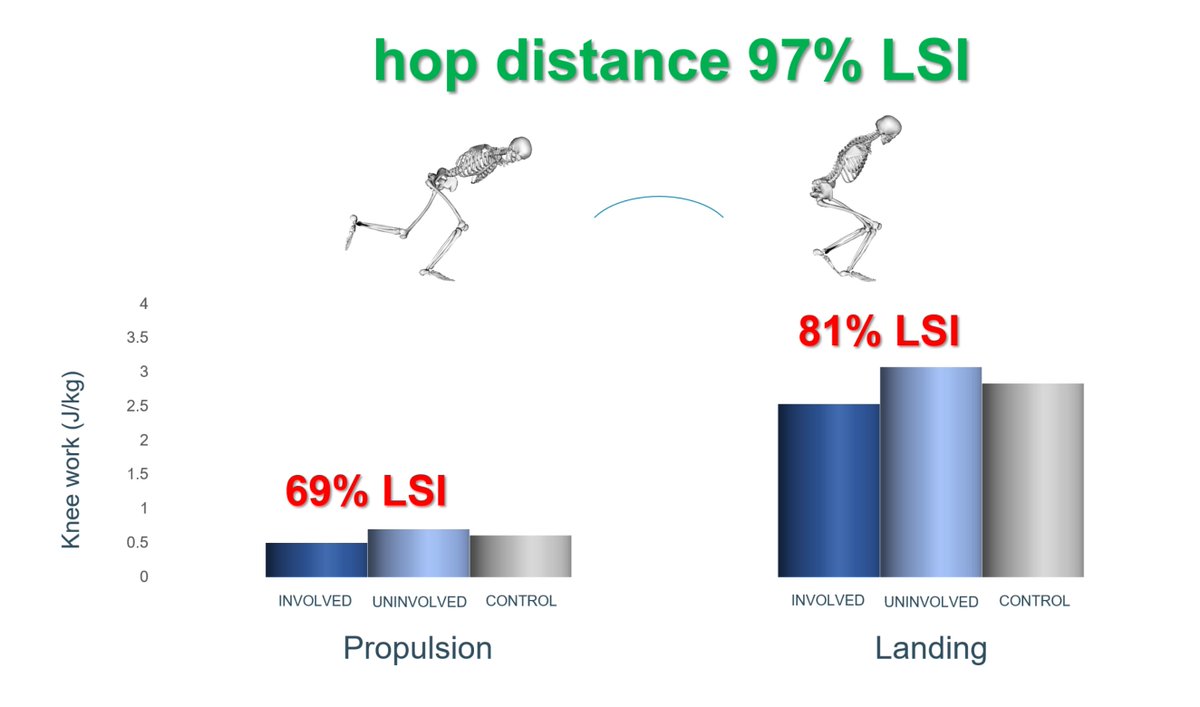Vertical jump testing at the time to #RTS after #ACLR.
Which tests?
How?
Which metrics?
Normative data
bjsm.bmj.com/content/early/…
Check this thread! 👇
Which tests?
How?
Which metrics?
Normative data
bjsm.bmj.com/content/early/…
Check this thread! 👇

Vertical jump tests are more sensitive in detecting performance asymmetries post-ACLR compared to horizontal hop tests. But, which vertical tests and metrics are the best indicators of rehab progress and readiness for return to sport?
We compared the vertical jump performance of 126 athletes at the time to #RTS after #ACLR and 532 healthy athletes during 4 vertical tests using phase auto-detection software @forcedecks. 

During the CMJ there were differences during the concentric phase, especially in the second half time-wise (concentric impulse P2), jump height, and peak landing force symmetry between groups. 

🚨 Important reminder!
📣 Be careful when interpreting results during landing. The symmetry in healthy athletes can vary from 50 to 150% (grey violin plot).
📣 Be careful when interpreting results during landing. The symmetry in healthy athletes can vary from 50 to 150% (grey violin plot).

Healthy population may have a preference for landing with their left or right leg, and this preference can change in every trial during the test.
The ACL patient during rehab doesn’t want to land on the involved side. This is what we need to restore.
The ACL patient during rehab doesn’t want to land on the involved side. This is what we need to restore.
During the SLJ there were differences during the concentric phase and the jump height but no difference in peak landing force symmetry between groups. 

During the bilateral Drop Jump, there were differences in the concentric impulse, Reactive Strength Index, contact time, and peak landing force symmetry between groups. 

During the Single leg Drop Jump, there were significant differences in the eccentric impulse, force at zero velocity and concentric impulse. No difference in the peak landing force.
Significant differences in all performance metrics.
Significant differences in all performance metrics.

How vertical testing can inform my rehabilitation?
Ground Reaction Force (GRF) analysis holds the key! By examining specific phases - eccentric, concentric, and landing - we can uncover valuable insights on an athlete's post-ACLR status and adjust our rehab accordingly.
Ground Reaction Force (GRF) analysis holds the key! By examining specific phases - eccentric, concentric, and landing - we can uncover valuable insights on an athlete's post-ACLR status and adjust our rehab accordingly.
Concentric phase asymmetries
In this study, the most prominent differences were during the concentric phase especially the second half - just before takeoff. A possible explanation might be the role of ankle plantar flexors or how quads work close to terminal extension.
In this study, the most prominent differences were during the concentric phase especially the second half - just before takeoff. A possible explanation might be the role of ankle plantar flexors or how quads work close to terminal extension.
Bilateral or unilateral test?🤔
Both have their benefits! Bilateral tests unveil inter-limb compensatory strategies, while unilateral tests assess individual limb performance and enable comparison to the opposite limb.
Both have their benefits! Bilateral tests unveil inter-limb compensatory strategies, while unilateral tests assess individual limb performance and enable comparison to the opposite limb.
The single leg drop jump test
It seems that drop jumps take the lead in exposing knee deficits. Significant differences were observed in all phases and performance metrics. These jumps are crucial for assessing power and reactivity.
It seems that drop jumps take the lead in exposing knee deficits. Significant differences were observed in all phases and performance metrics. These jumps are crucial for assessing power and reactivity.
Plyometric training
💥 Residual deficits in single leg drop jumps highlight the need for more plyometric training in ACL rehab! 📉 Plyometric drills are vital for athletes as they enhance neuromuscular qualities and explosive performance in sports.
💥 Residual deficits in single leg drop jumps highlight the need for more plyometric training in ACL rehab! 📉 Plyometric drills are vital for athletes as they enhance neuromuscular qualities and explosive performance in sports.
🚨Cautionary note on performance metrics!
While our study provides normative data from 532 football players, it's crucial to remember that every athlete is unique. Performance metrics are influenced by various factors including activity level, sport, sex, age, and more.
While our study provides normative data from 532 football players, it's crucial to remember that every athlete is unique. Performance metrics are influenced by various factors including activity level, sport, sex, age, and more.

📍Performance metrics
Still not restored in all types of jumps examined. Jump height, a critical metric linked to the concentric phase, requires powerful extension of the hip, knee, and ankle for maximum performance.
Still not restored in all types of jumps examined. Jump height, a critical metric linked to the concentric phase, requires powerful extension of the hip, knee, and ankle for maximum performance.

📱 Good news for clinicians! 📈
Capturing performance metrics is now easier than ever, thanks to a range of equipment options, including mobile phones. This allows clinicians to track athletes' progress and ensure restoration of these metrics before granting a RTS. @MyJumpLab
Capturing performance metrics is now easier than ever, thanks to a range of equipment options, including mobile phones. This allows clinicians to track athletes' progress and ensure restoration of these metrics before granting a RTS. @MyJumpLab
The best way of using performance metrics is to have pre-injury data. By comparing current metrics with baseline, we can track recovery and ensure athletes regain their pre-injury levels. If not available, focus on restoring symmetry between limbs in unilateral tests.
Influence of graft choice
The transition between eccentric and concentric phase (force at zero velocity) was the metric influenced mostly by the graft type and there were greater asymmetries in all tests with a BTB graft.
The transition between eccentric and concentric phase (force at zero velocity) was the metric influenced mostly by the graft type and there were greater asymmetries in all tests with a BTB graft.
Is symmetry important?
Absolutely!
Restoring symmetry is a crucial objective in rehabilitation after any kind of injury. Clinicians should use asymmetry metrics on an individual level and by comparing to the noise of each test and each metric.
Absolutely!
Restoring symmetry is a crucial objective in rehabilitation after any kind of injury. Clinicians should use asymmetry metrics on an individual level and by comparing to the noise of each test and each metric.
📣🔍 Examining symmetry's significance! 🤔 While questions have arisen regarding its importance, we can't overlook the fact that between-limb asymmetry in the control group was generally minimal across variables, except for landing.
Equally important is to return the athlete to their previous level of performance or better. The uninvolved limb should be monitored during rehabilitation, and both limbs should reach matched-control normative values in the absence of pre-operative data.
Restoring vertical jump mechanics and performance accounts for almost 95% of the rehab process in the clinic, IMO. It reflects improved strength, power, and motor control, setting the stage for a successful return to sport.
bit.ly/3WHWlch
bit.ly/3WHWlch

• • •
Missing some Tweet in this thread? You can try to
force a refresh

 Read on Twitter
Read on Twitter

















